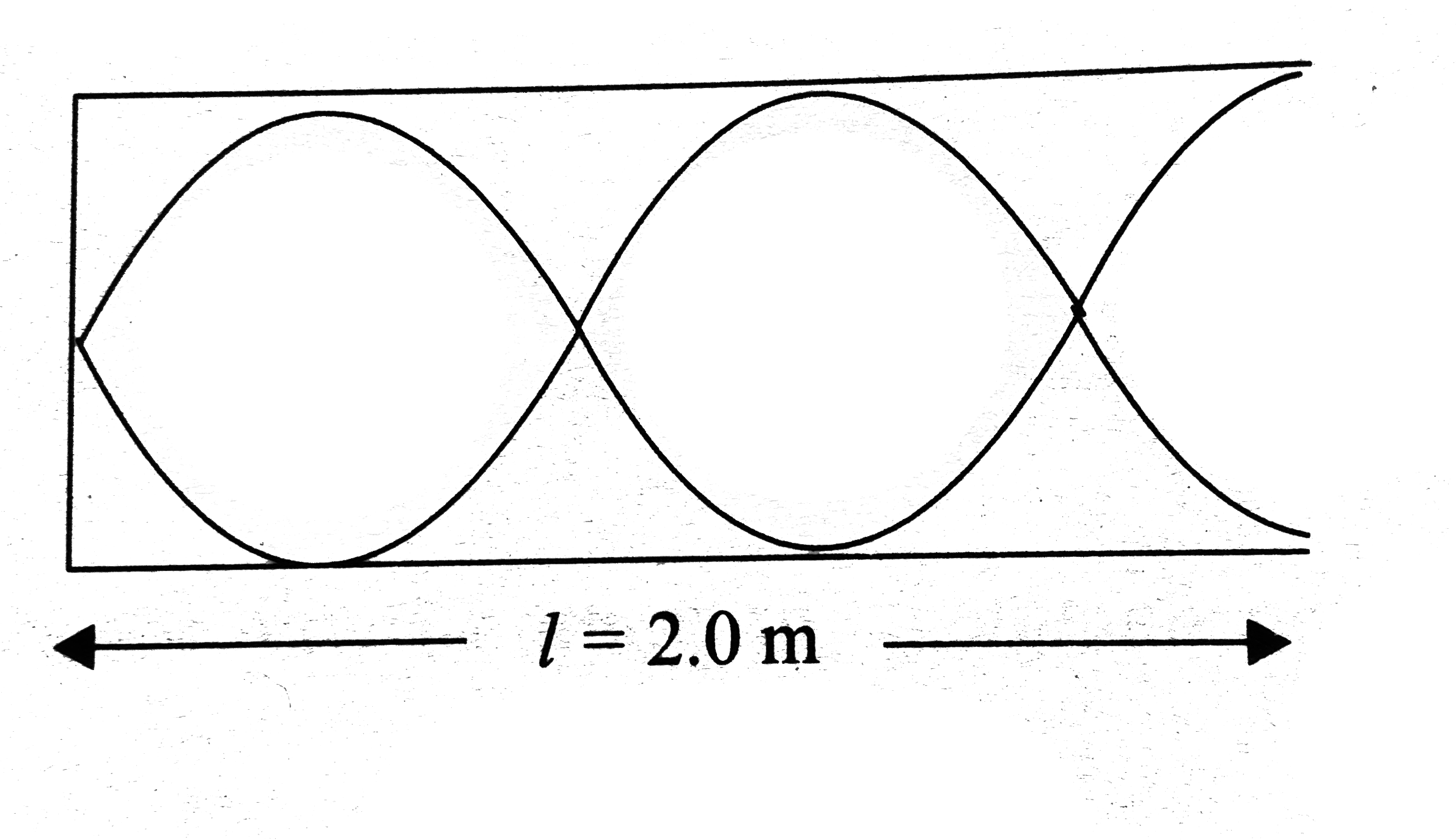A standing wave propagating with velocity 300ms−1 in an open pipe of length 4 m has four nodes. The frequency of the wave is
75 Hz
100 Hz
150 Hz
300 Hz
The correct Answer is:C
To solve the problem step by step, we will follow the reasoning laid out in the video transcript.
Step 1: Understand the standing wave in the open pipe
In an open pipe, standing waves are formed with nodes and antinodes. The number of nodes in the pipe is given as 4.
Step 2: Determine the relationship between nodes and wavelengths
In a standing wave, the distance between two consecutive nodes is equal to half the wavelength (λ/2). Therefore, if there are 4 nodes, we can visualize the arrangement as follows:
- Node 1
- Antinode
- Node 2
- Antinode
- Node 3
- Antinode
- Node 4
This means there are 3 segments of λ/2 in the length of the pipe.
Step 3: Calculate the total length of the pipe in terms of wavelength
Since the length of the pipe (L) is 4 meters, and there are 3 segments of λ/2, we can write the equation:
L=3λ2
Substituting the length of the pipe:
4=3λ2
Step 4: Solve for the wavelength (λ)
To find λ, we rearrange the equation:
3λ=8⇒λ=83 meters
Step 5: Use the wave velocity to find the frequency
The wave velocity (v) is given as 300 m/s. The relationship between wave velocity (v), frequency (ν), and wavelength (λ) is given by:
v=νλ
Rearranging for frequency:
ν=vλ
Step 6: Substitute the known values
Substituting the values we have:
ν=300 m/s83 m=300×38=9008=112.5 Hz
Step 7: Finalize the answer
Thus, the frequency of the wave is:
ν=112.5 Hz
Summary
The frequency of the standing wave in the open pipe is 112.5 Hz.
---
In an open pipe, standing waves are formed with nodes and antinodes. The number of nodes in the pipe is given as 4.
In a standing wave, the distance between two consecutive nodes is equal to half the wavelength (λ/2). Therefore, if there are 4 nodes, we can visualize the arrangement as follows:
- Node 1
- Antinode
- Node 2
- Antinode
- Node 3
- Antinode
- Node 4
Since the length of the pipe (L) is 4 meters, and there are 3 segments of λ/2, we can write the equation:
L=3λ2
Substituting the length of the pipe:
4=3λ2
To find λ, we rearrange the equation:
3λ=8⇒λ=83 meters
The wave velocity (v) is given as 300 m/s. The relationship between wave velocity (v), frequency (ν), and wavelength (λ) is given by:
v=νλ
Rearranging for frequency:
ν=vλ
Substituting the values we have:
ν=300 m/s83 m=300×38=9008=112.5 Hz
Thus, the frequency of the wave is:
ν=112.5 Hz
The frequency of the standing wave in the open pipe is 112.5 Hz.
Similar Questions
Consider the propagating sound (with velocity 330ms−1) in a pipe of length 1.5 m with one end closed and the other open. The frequency associated with the fundamental mode is
View SolutionThe standing wave pattern shown in the tube has a wave speed of 5.0ms−1. What is the frequency of the standing wave [ in Hz approx.] ?

View SolutionA standing wave in second overtone is maintained in a open pipe of length L. The distance between consecutive displacement node and pressure node is L/x. Find x
View SolutionCalculate the frequency of 2nd harmonic in an open organ pipe of length 34 cm if the velocity of sound is 340m/s.
View SolutionA strain of sound waves is propagated along an organ pipe and gets reflected from an open end . If the displacement amplitude of the waves (incident and reflected) are 0.002cm , the frequency is 1000Hz and wavelength is 40cm. Then , the displacement amplitude of vibration at a point at distance 10cm from the open end , inside the pipe is
View SolutionA plane progressive wave propagating through air has an amplitude of 10−3m and a frequency of 480 Hz. Calculate the energy density and intensity of wave. Given velocity of wave =340ms−1 and density of air =1.29kg m−3.
View SolutionIn a standing wave pattern obtained in an open tube filled with Iodine, due to vibrations of frequency 800 cycle/sec the dist between first node, eleventh node is found to be 1 m when the temperature of iodine vapour is 352∘C. If the temperature is 127∘C , the distance between consecutive nodes is (in centimeters) (approximately).
View SolutionOcean waves of time period 10 s have wave velocity 15 ms−1. Find the wavelength of these waves .
View SolutionIn a standing wave 4 nodes and 3 antinodes are formed between two fixed end of string of length 6 m.Then the wave length of the standing wave is
View SolutionTwo identical sinusoidal waves travel in opposite direction in a wire 15m long and produce a standing wave in the wire . If the speed of the wave is 12ms−1 and there are 6 nodes in the standing wave . Find the frequency .
View Solution
